Why you can trust Tom's Hardware
Comparison Products

As a top-ranking SSD, we threw the Viper VP4100 into the pit against some of the best SSDs on the market.
We include the 1.5TB Intel Optane 905P with its 3D XPoint memory that is easily the most expensive consumer SSD on the market. We also threw in a 1TB Samsung 970 PRO (Phoenix + 64L MLC V-NAND) and 2TB 970 EVO Plus (Phoenix + 9xL TLC V-NAND) as high-end contenders. The 1TB Corsair Force MP600 (Phison E16 + Kioxia BiCS4 96L TLC) provides capacity/performance comparisons.
Additionally, we included we added in the MyDigitalSSD BPX Pro 1.92TB (Phison E12 + Kioxia BiCS3 64L TLC) HP SSD EX950 (SM2262EN + Micron 64L TLC), and one of the cheapest NVMe SSDs available, the Intel SSD 660p (SM2263EN + Micron 64L QLC). We even threw in a 1TB Crucial MX500 (SM2258 + Micron 64L TLC), a SATA SSD, and a 6TB WD Black HDD for good measure.
Game Scene Loading - Final Fantasy XIV
The Final Fantasy XIV StormBlood benchmark is a free real-world game benchmark that easily and accurately compares game load times without the inaccuracy of using a stopwatch.
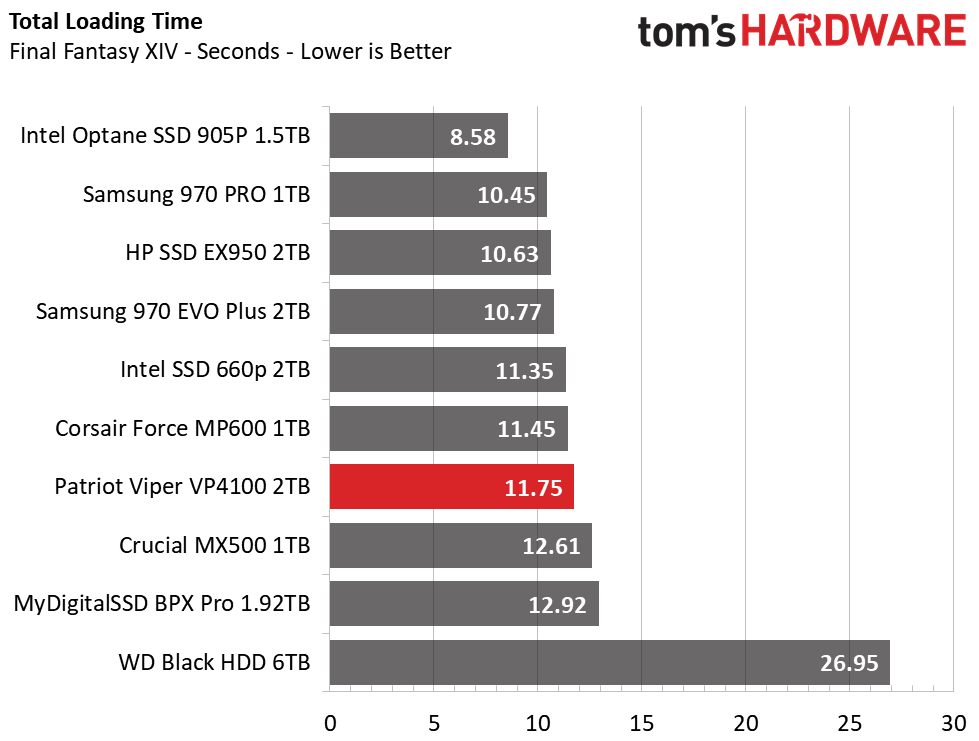
While the PCIe 4.0 interface enables double the potential throughput, ordinary tasks don’t yet take advantage due to unoptimized software. Game load performance is one of these tasks. The Intel Optane 905P is the winner here with its industry-leading random performance. The Viper VP4100 still yielded an average result, however. With a total load time of 11.75 seconds, it nearly matches the 1TB Force MP600 and significantly outperforms the HDD.
System Restore – Macrium Reflect
A system clone or restoration isn’t something many people do often. But it can become a time-consuming task with slow storage devices like HDDs or entry-level SSDs - especially if you have a lot of data. Therefore, we developed a test to measure how long this task takes. To ensure repeatable results, we secure erase each SSD to ensure the pSLC cache is empty before we restore an average-sized 222GB operating system and files from a 1.5TB Intel Optane SSD 905P.
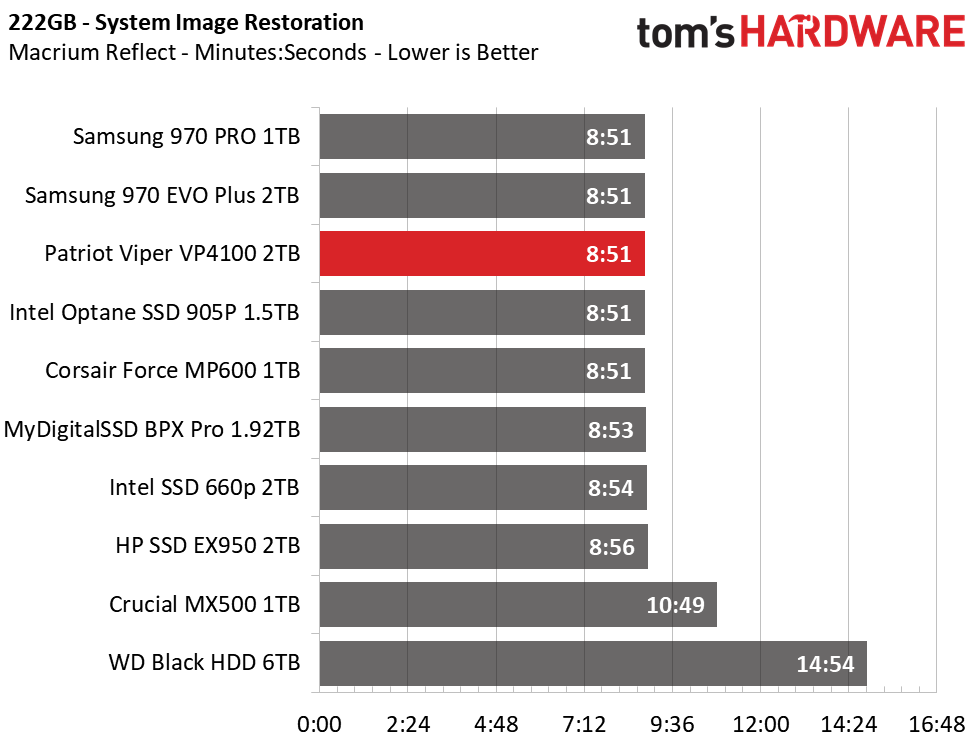
With an interface bottleneck holding it back, the MX500 writes the system image in roughly 11 minutes while the HDD takes almost 15 minutes. Upgrading to NVMe goodness enables faster image restoration times. All NVMe SSDs, including the VP4100, restore the image within 9 minutes.
Get Tom's Hardware's best news and in-depth reviews, straight to your inbox.
Transfer Rates – DiskBench
We use the DiskBench storage benchmarking tool to test file transfer performance with our own custom 50GB block of data. Our data set includes 31,227 files of various types, like pictures, PDFs, and videos. We copy the files to a new folder and then follow up with a reading test of a newly-written 6.5 GB file.
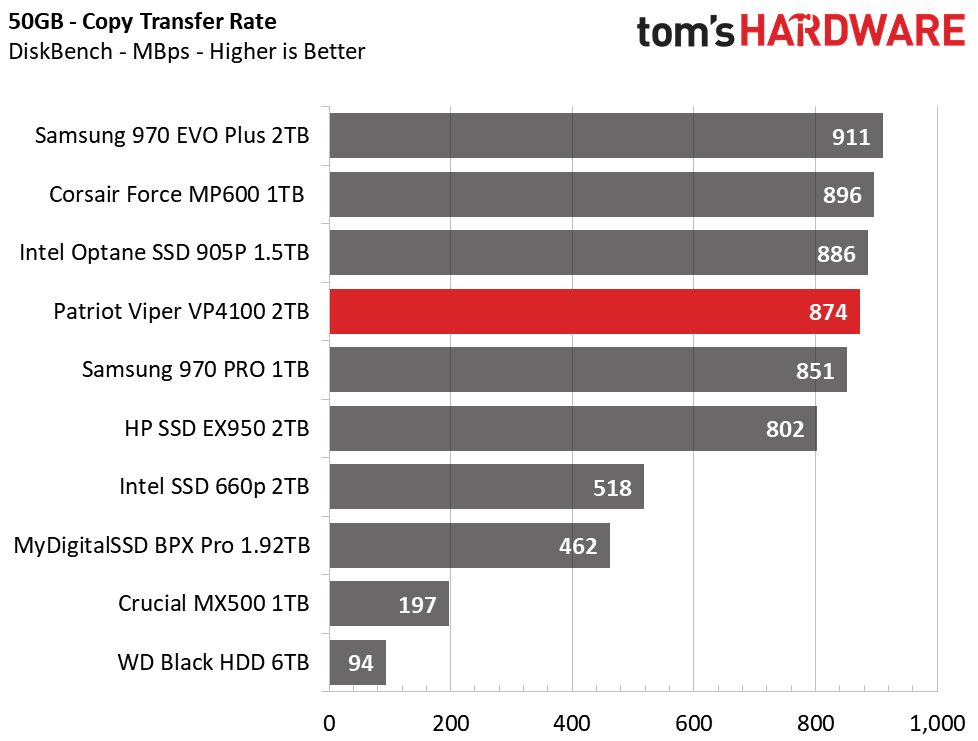

Patriot’s Viper VP4100 is fast at file copying tasks. At an average pace of 874 MBps, it falls just behind the Intel Optane 905P and the 1TB Corsair Force MP600, but outperforms the Samsung 970 Pro. Overall, the VP4100 comes in fourth place when copying the 50GB test folder.
When reading back out 6.5GB test file, it out-classes any competitor that can’t take advantage of the PCIe 4.0 interface. With a read speed of almost 2.9 GBps, it scores second place next to the MP600, leads the rest of the comparison pool by over 500 MBps, and absolutely smokes the HDD.
Trace Testing – PCMark 8 Storage Test 2.0
PCMark 8 is a trace-based benchmark that uses Microsoft Office, Adobe Creative Suite, World of Warcraft, and Battlefield 3 to measure the performance of storage devices in real-world scenarios.

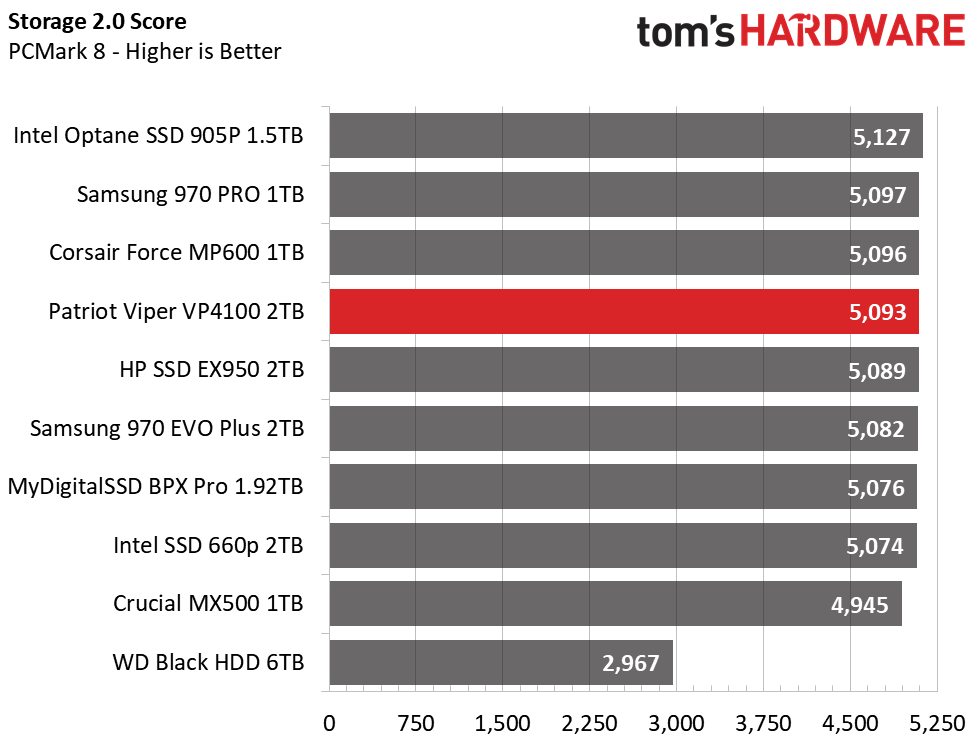
With a total score of 5,093 points and an average bandwidth of 673 MBps, Patriot’s Viper VP4100 comes in fourth place in our PCMark 8 tests. This is a good indicator that when it comes to most consumer-based tasks, the VP4100 is more than capable of keeping up. Most NVMe SSDs perform similarly enough, but they wipe the floor with the HDD in responsiveness and throughput.
Trace Testing – SPECworkstation 3
Like PCMark 8, SPECworkstation 3 is a trace-based benchmark, but it is designed to push the system harder by measuring workstation performance in professional applications. The full suite consists of more than 30 workloads, but we've opted to only run the storage benchmark which uses only 15 of them and categorizes the results into 5 market segments for scoring: Media & Entertainment, Product Development, Life Sciences, Energy, and General Operations.

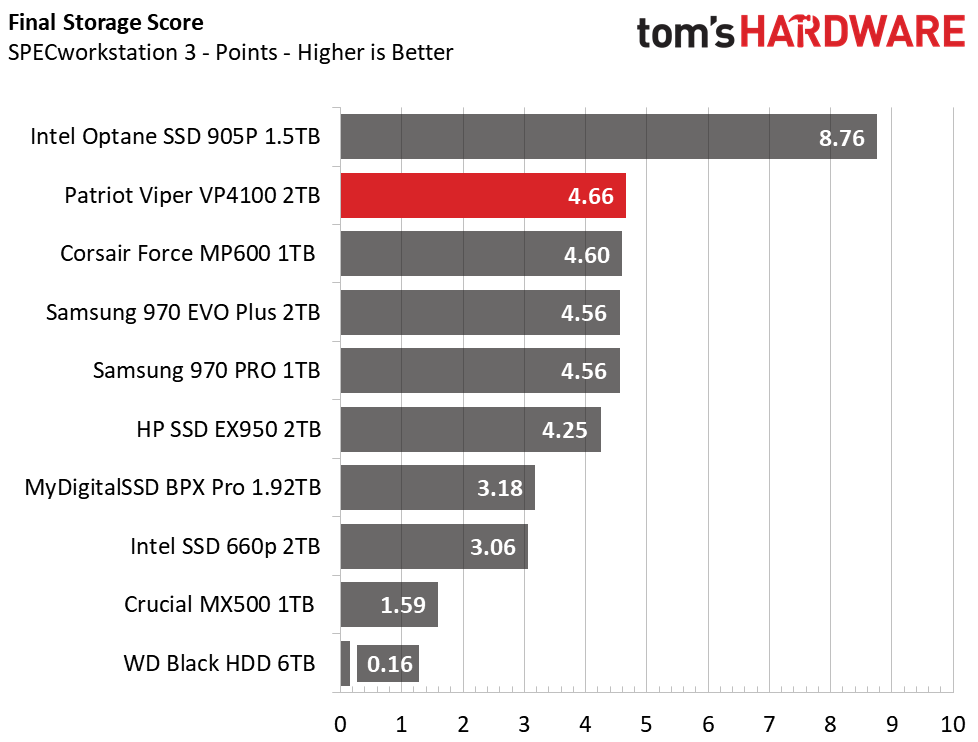
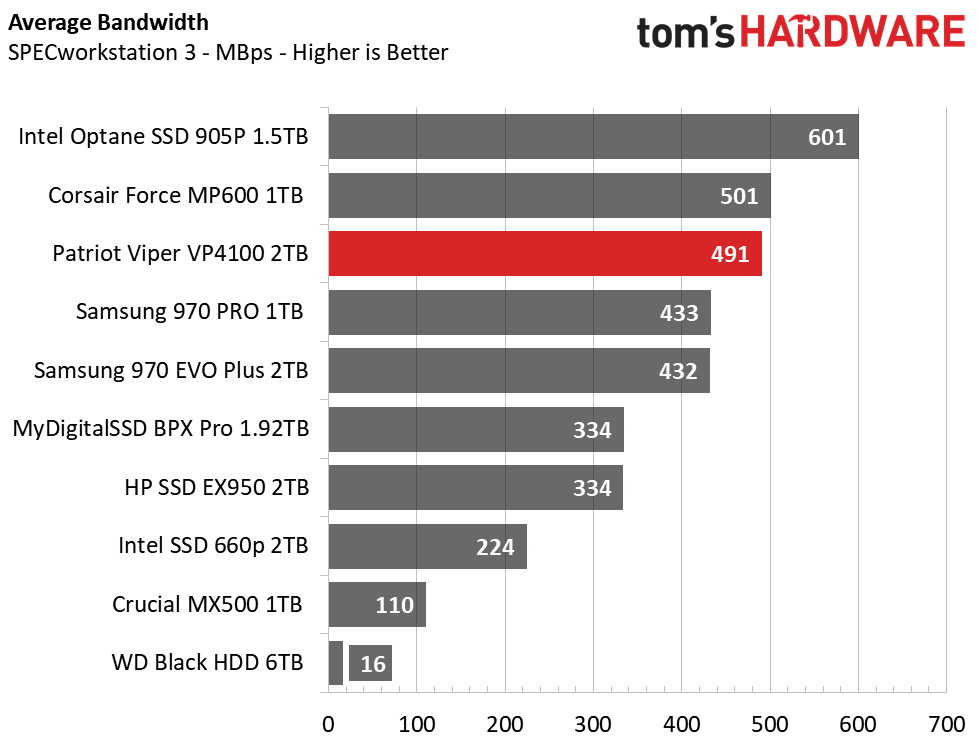


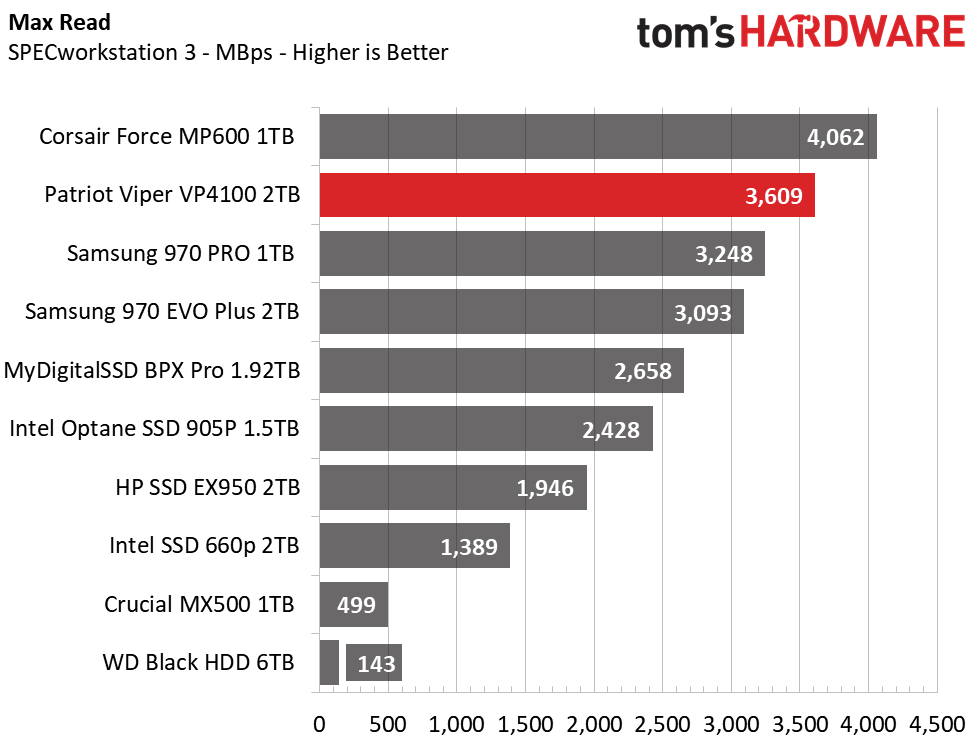
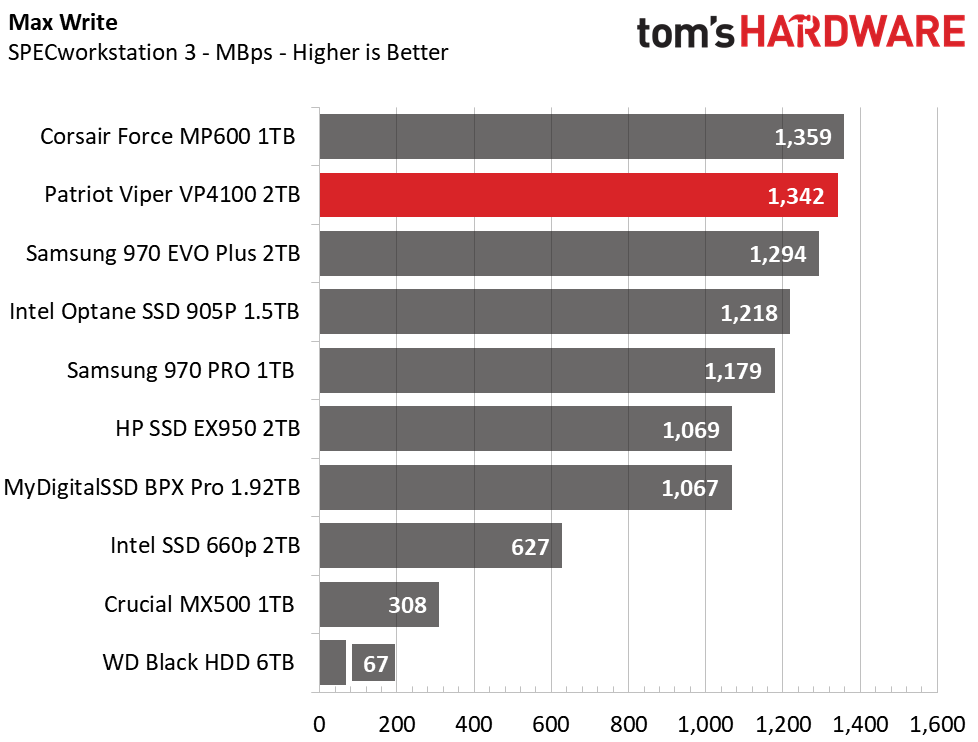
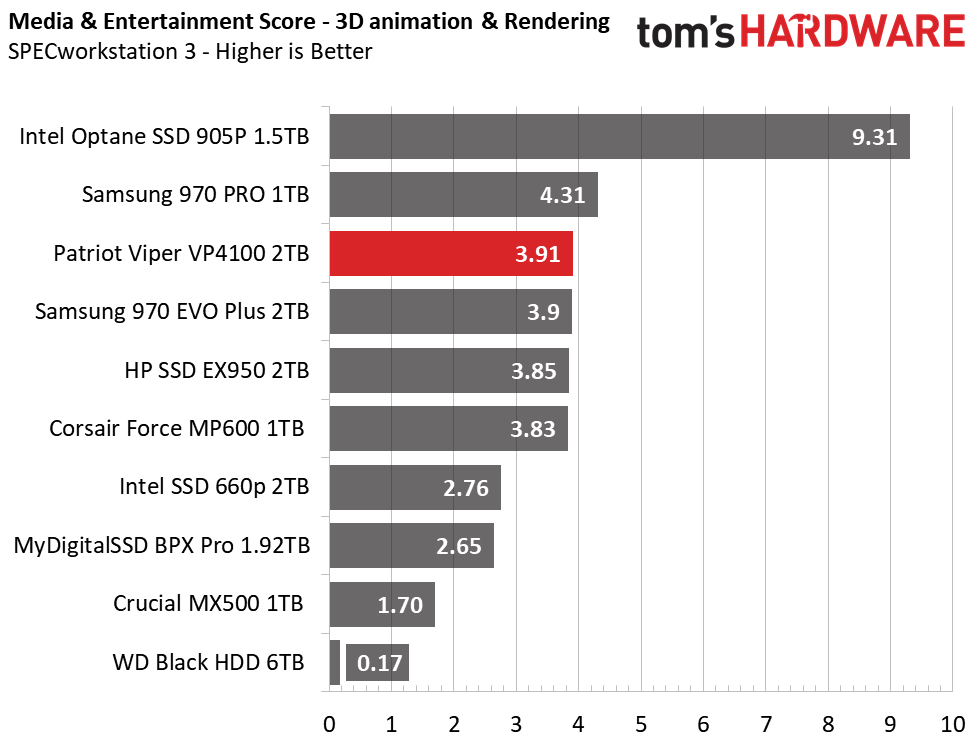
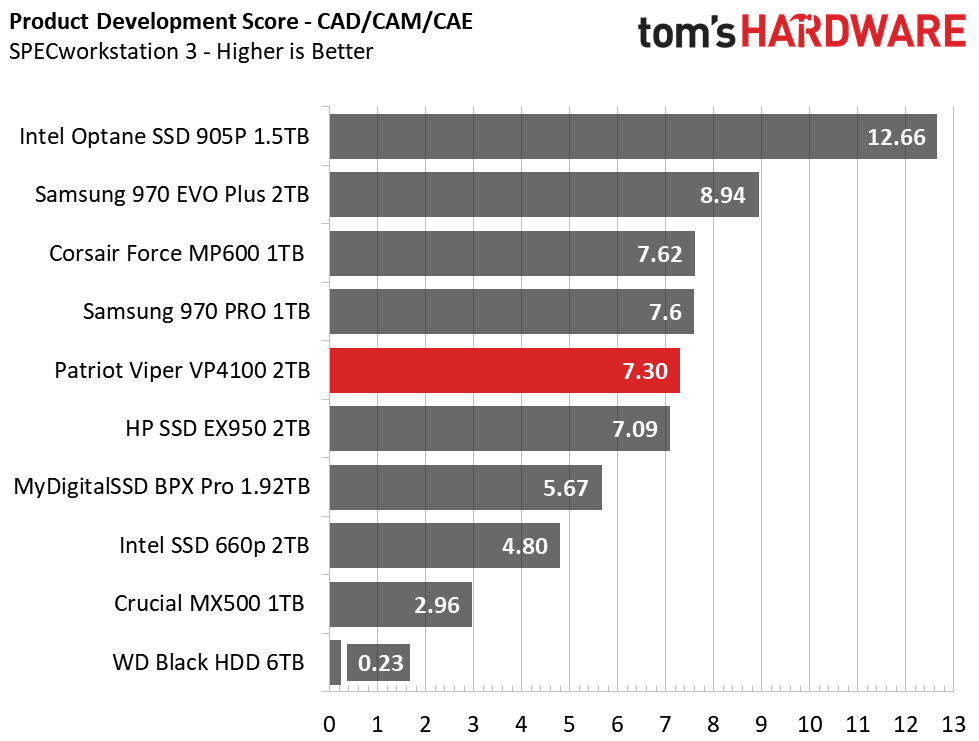
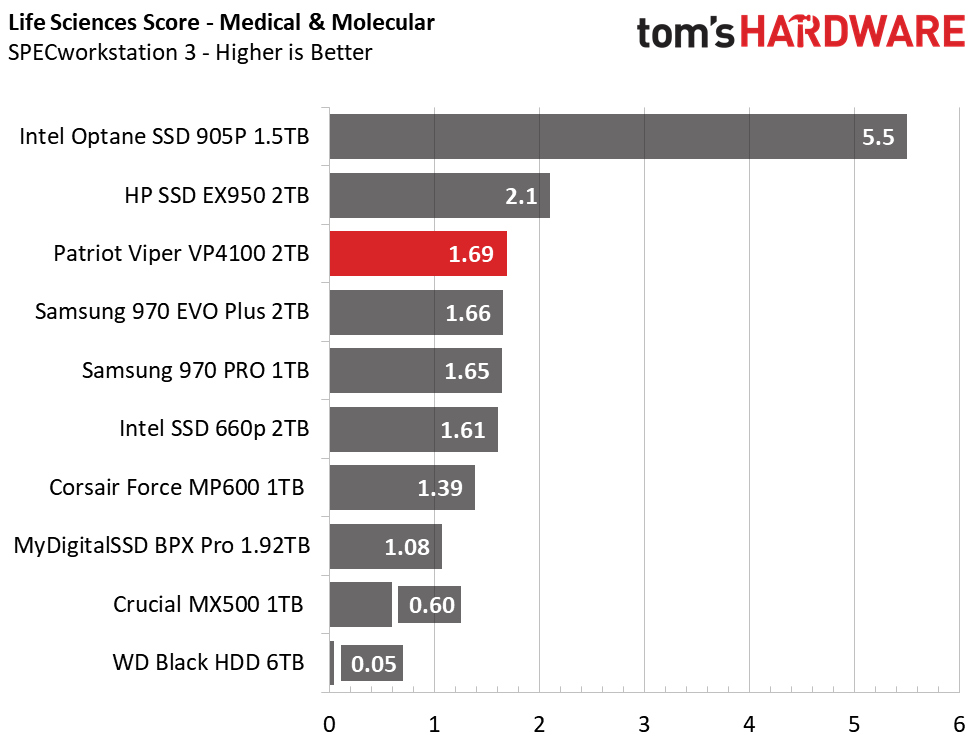
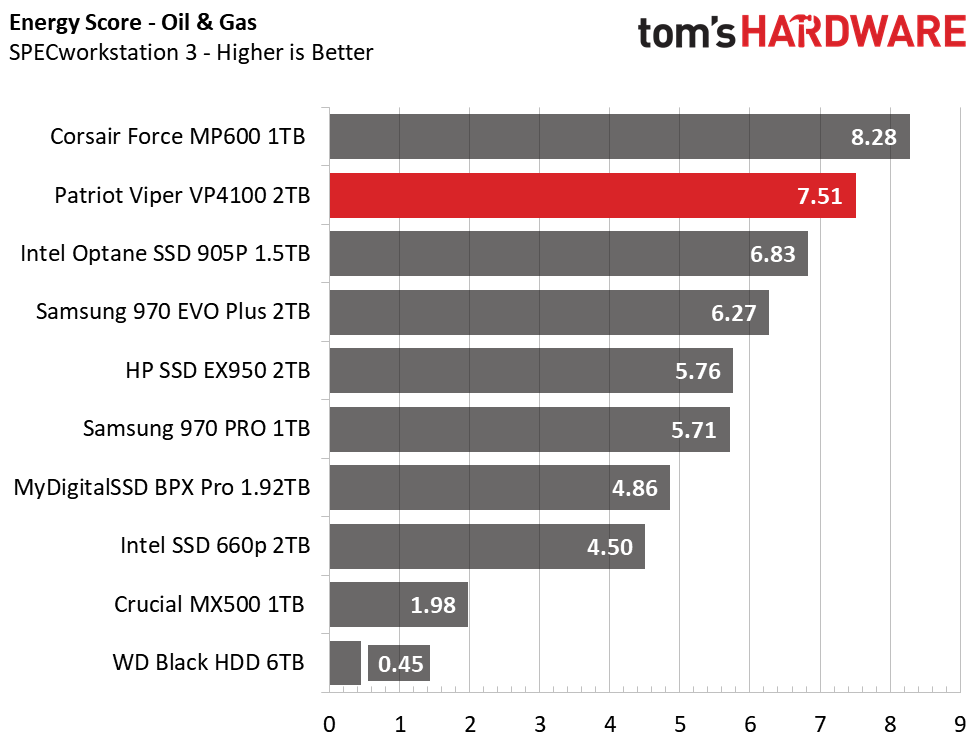

Under heavier prosumer workloads, the VP4100 one-ups the 970 PRO thanks to its increased bandwidth. Overall, it scored similarly to the 1TB MP600, but couldn't surpass the Intel Optane 905P. Intel’s Optane is the best drive for heavy workloads with its ultra-low response times, but those who opt for the Patriot Viper VP4100 won’t be left disappointed.
Synthetic Testing - ATTO
ATTO is a simple and free application that SSD vendors commonly use to assign sequential performance specifications to their products. It also gives us insight into how the device handles different file sizes. We test at a QD (queue depth) of 1, which better represents consumer performance, instead of the default value of 4.
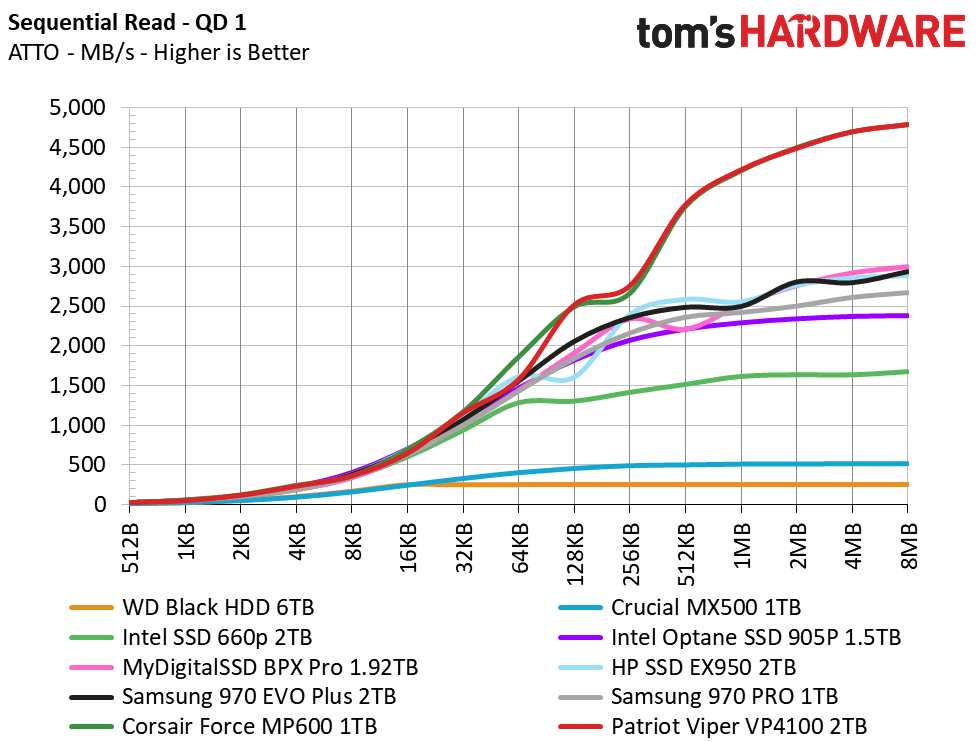

Patriot’s Viper VP4100 scores just under 5/4 GBps read/write in ATTO. This outscores every other SSD out from the 16KB file size and up, similar to the Force MP600.
Synthetic Testing - iometer
iometer is an advanced and highly configurable storage benchmarking tool that vendors often use to measure the performance of their devices.

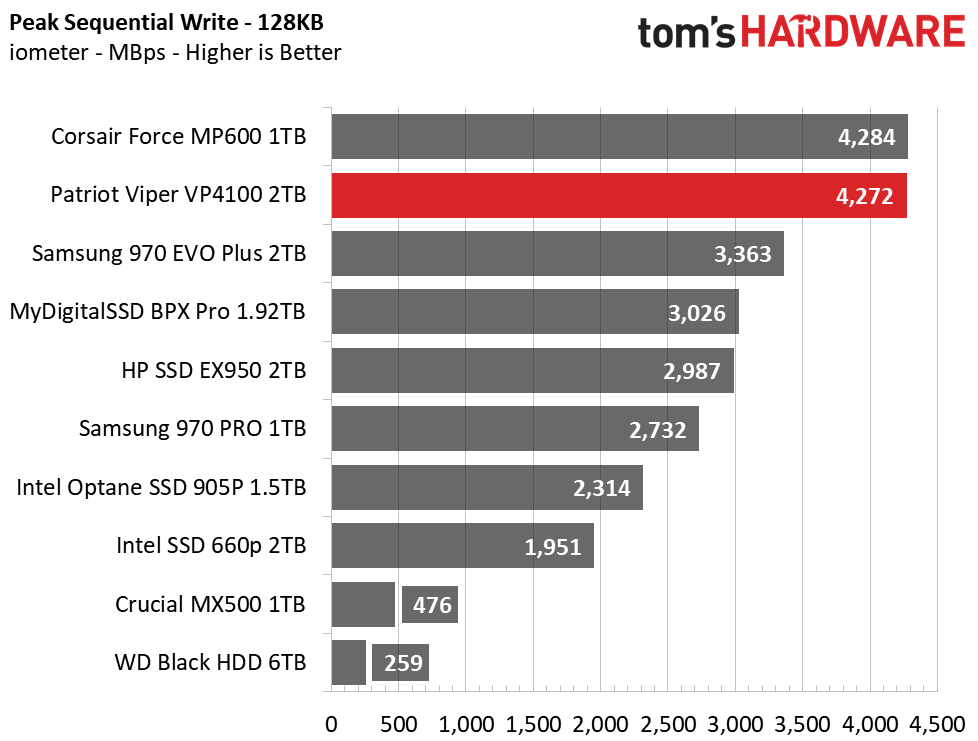
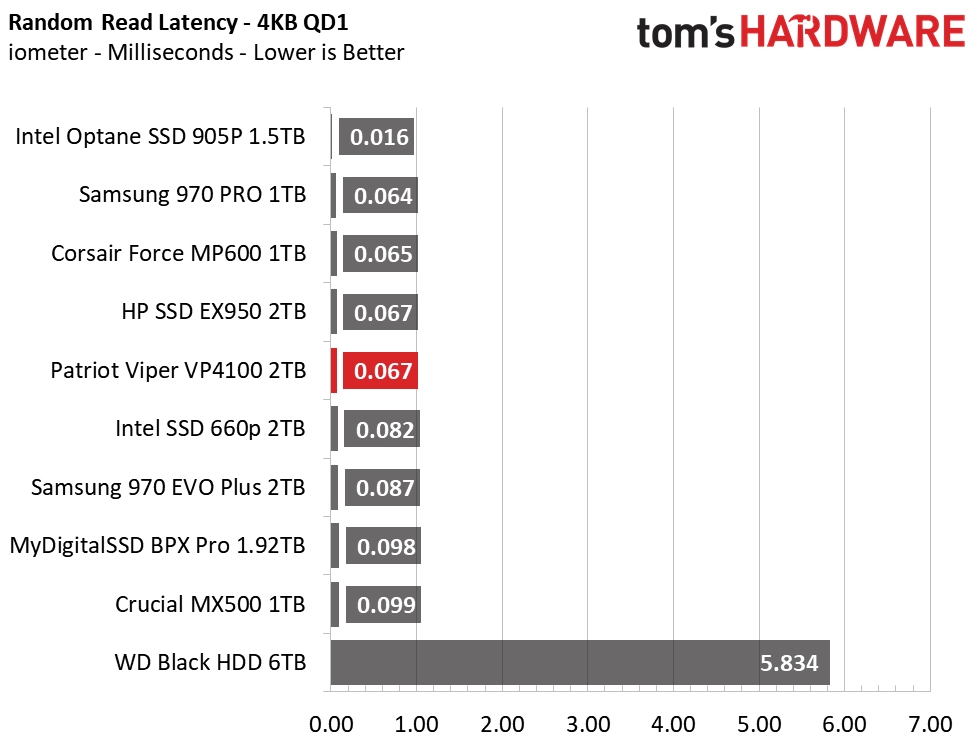
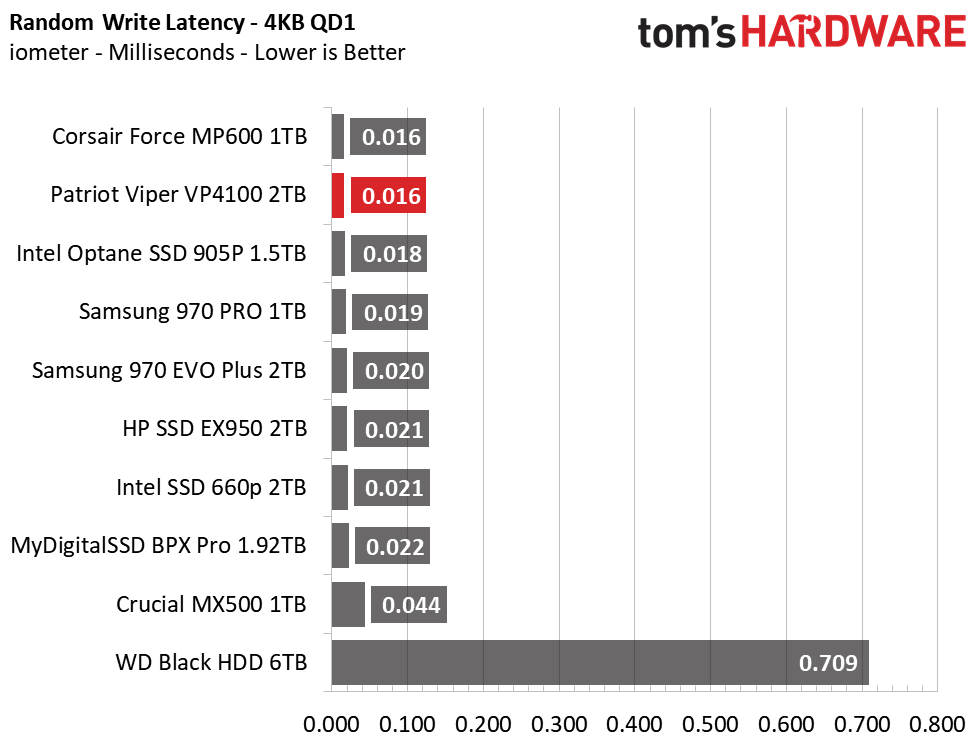
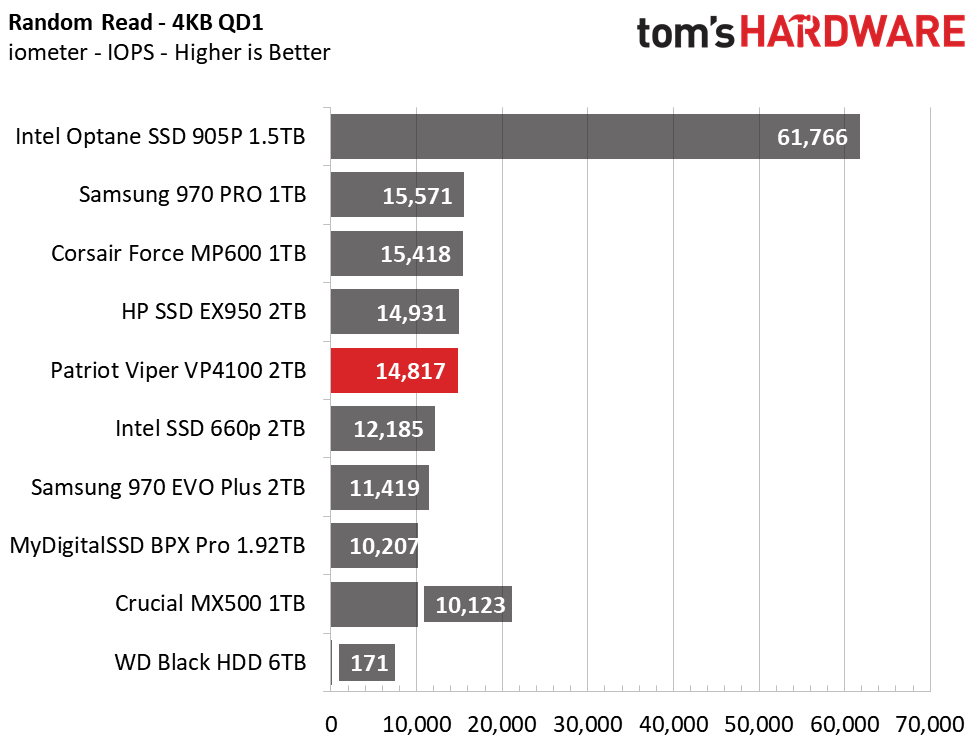
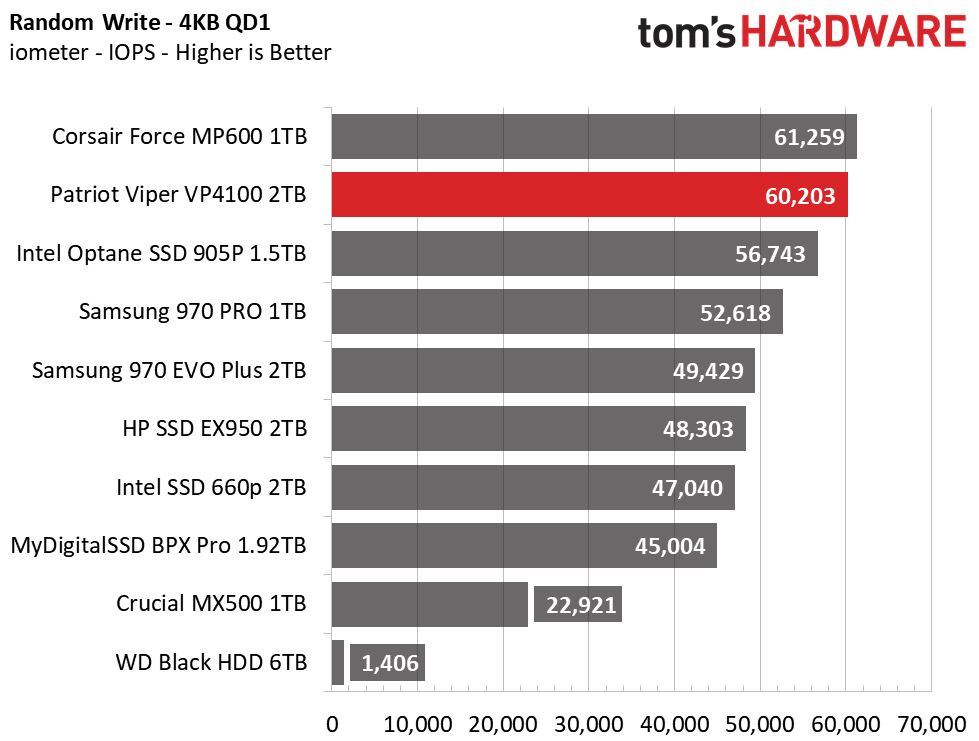

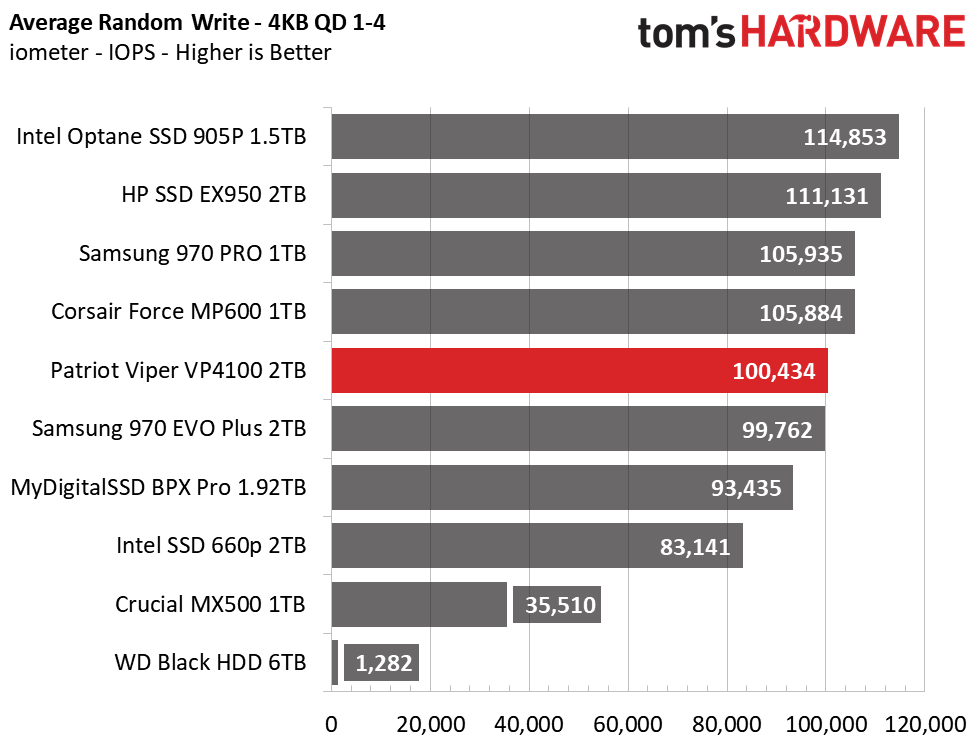
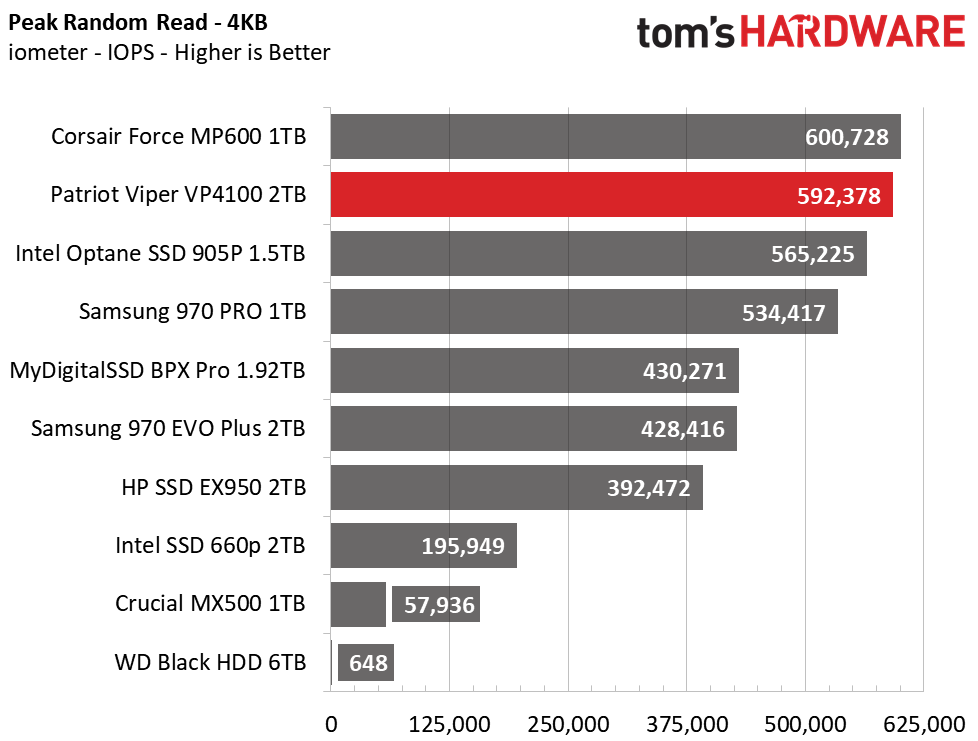

The Viper VP4100 and Force MP600 are in a league of their own in sequential throughput, scoring roughly 5/4.3 GBps in the read/write tests.
Random responsiveness and performance results at lower queue depths are also very good. Overall, on average, the random performance is similar to most other competitors, though. Peak performance numbers are within a hair of the Force MP600, with performance coming in at 592,000/536,000 read/write IOPS.
Sustained Sequential Write Performance
Official write specifications are only part of the performance picture. Most SSD makers implement a pseudo-SLC cache buffer, which is a fast area of SLC-programmed flash that absorbs incoming data. Sustained write speeds can suffer tremendously once the workload spills outside of the pSLC cache and into the "native" TLC or QLC flash. We use iometer to hammer the SSD with sequential writes for 15 minutes to measure both the size of the pSLC buffer and performance after the buffer is saturated.
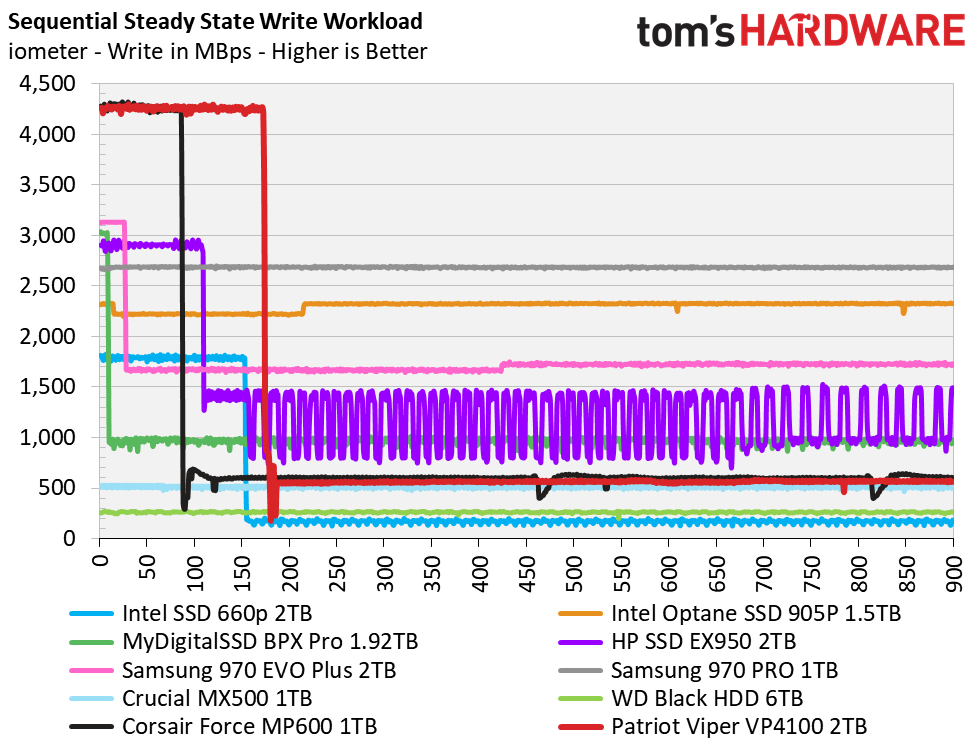
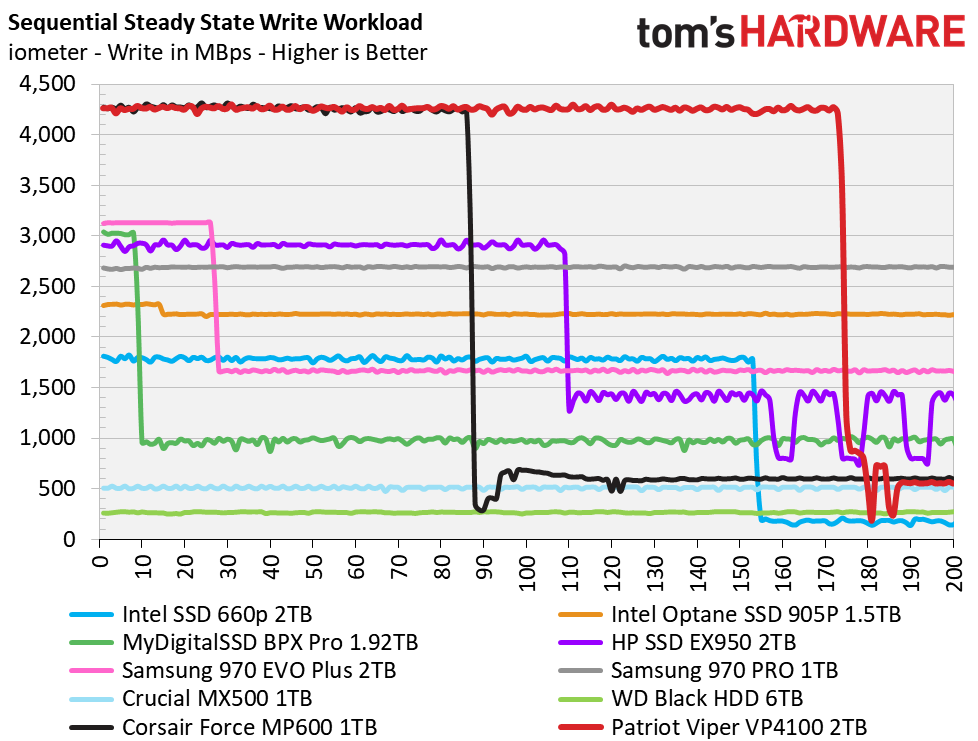
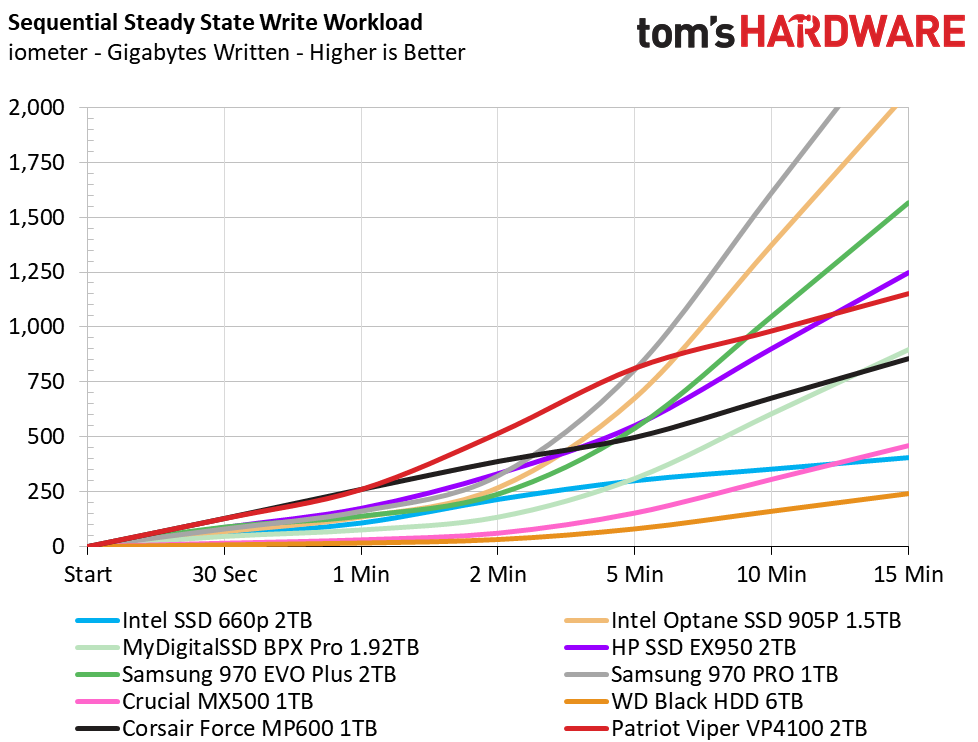

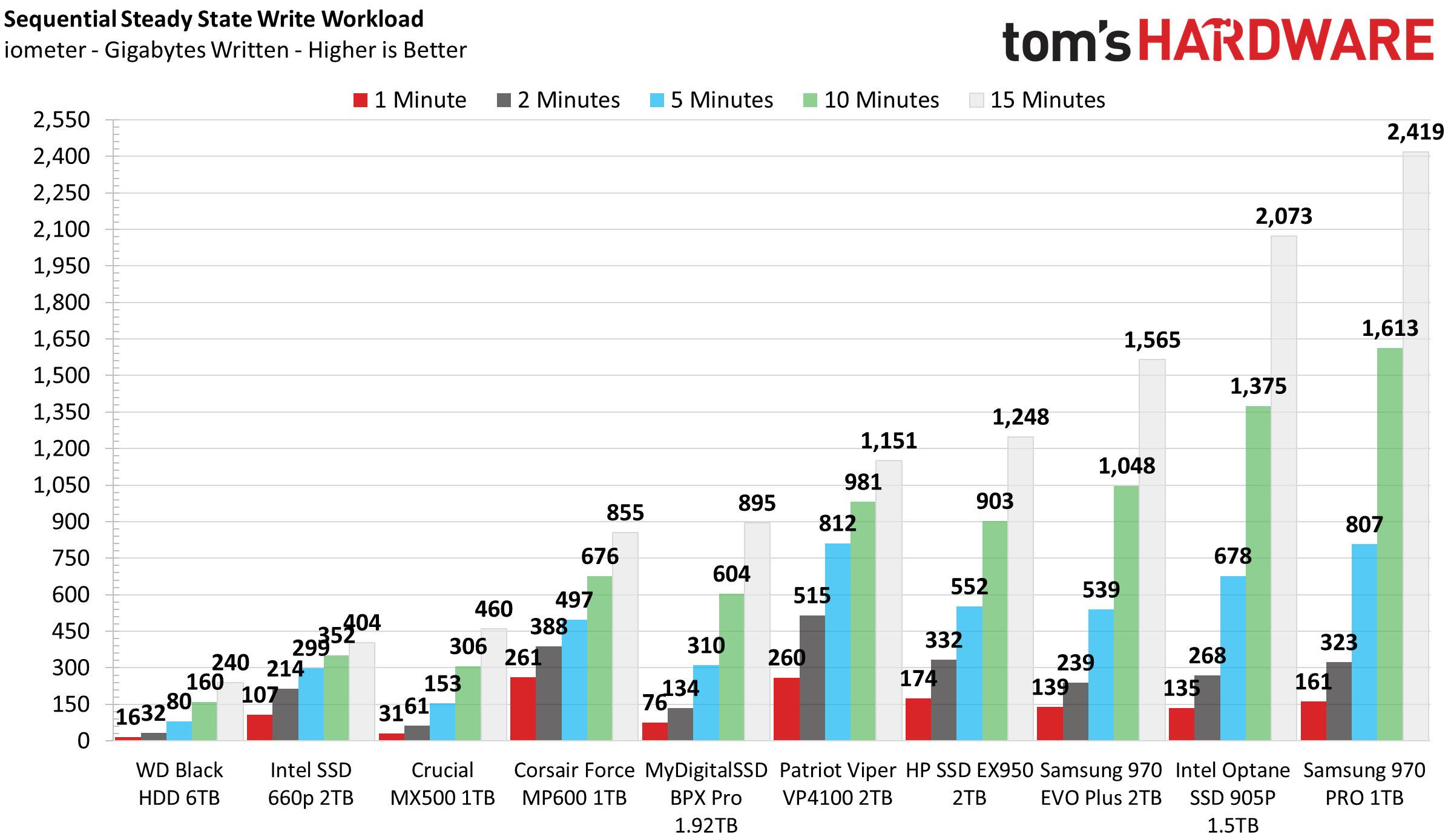
Patriot’s Viper VP4100 features the largest pSLC cache we've come across. While it is rated to be 666GB, we could still write to the SSD at a rate of 4.2 GBps for about three minutes before performance degraded. This result comes out to a total of just over 740GB of data written, which is impressive performance that aided the Viper VP4100 in our previous application testing. Once the cache is filled, the write performance degrades to about 600 MBps on average, however. As a result, the Viper is the fastest drive during our three-minute test, but beyond that, it scored fifth place overall.
Power Consumption
We use the Quarch HD Programmable Power Module to gain a deeper understanding of power characteristics. Idle power consumption is a very important aspect to consider, especially if you're looking for a new drive for your laptop. Some SSDs can consume watts of power at idle while better-suited ones sip just milliwatts. Average workload power consumption and max consumption are two other aspects of power consumption, but performance-per-watt is more important. A drive might consume more power during any given workload, but accomplishing a task faster allows the drive to drop into an idle state faster, which ultimately saves power.
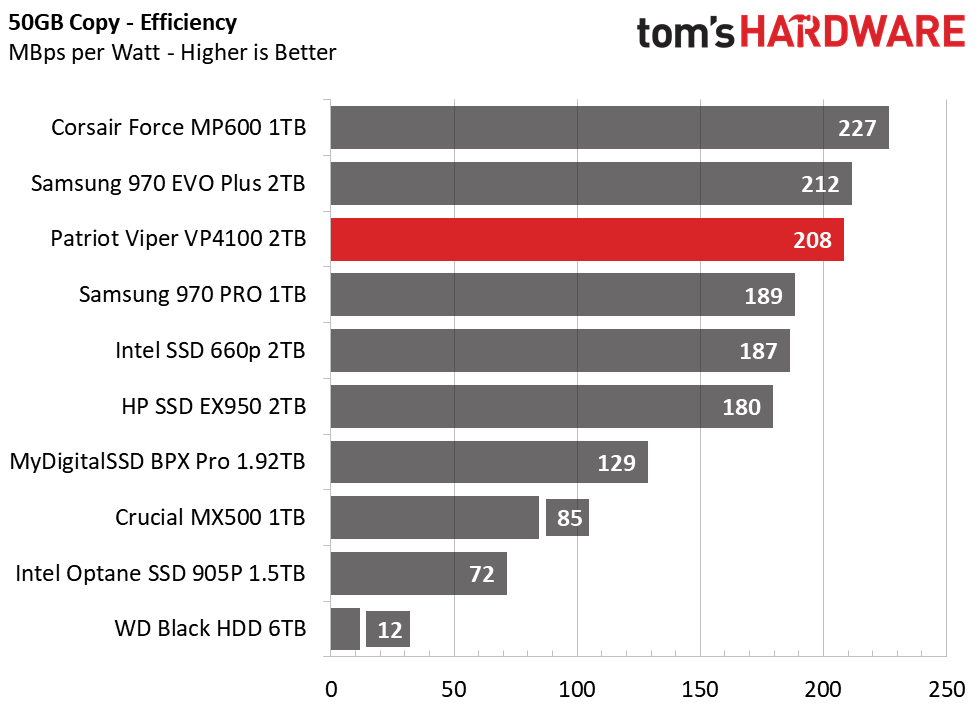
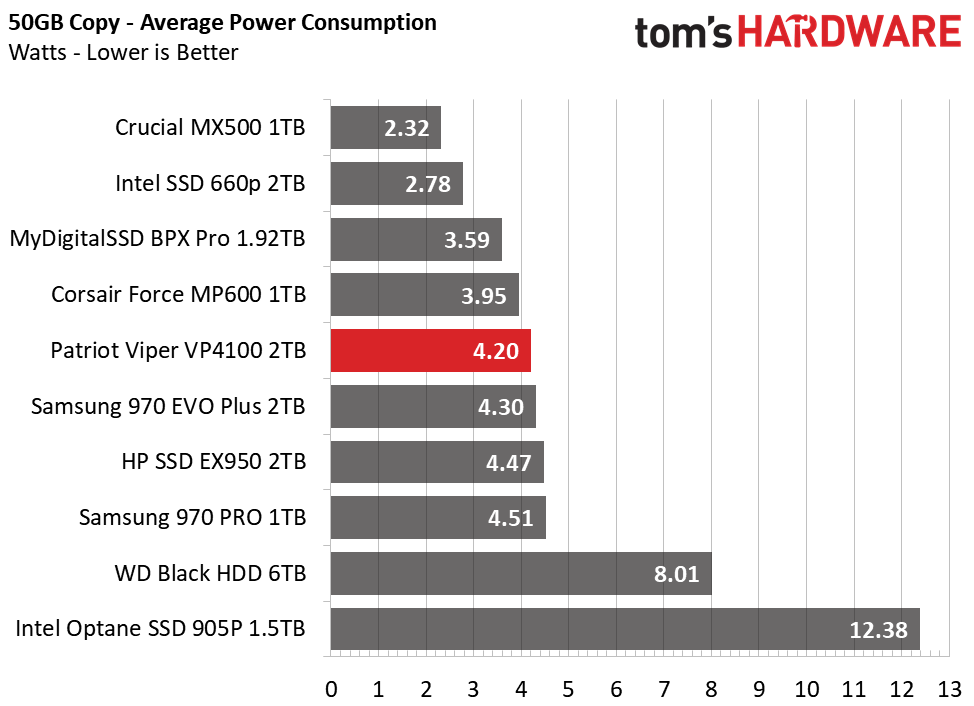
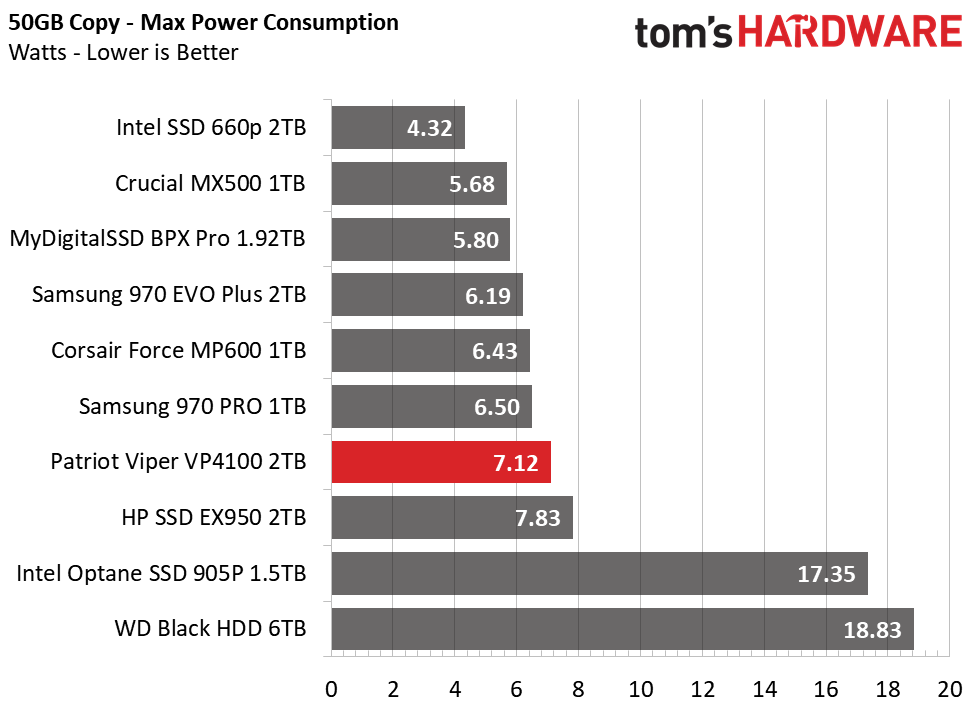
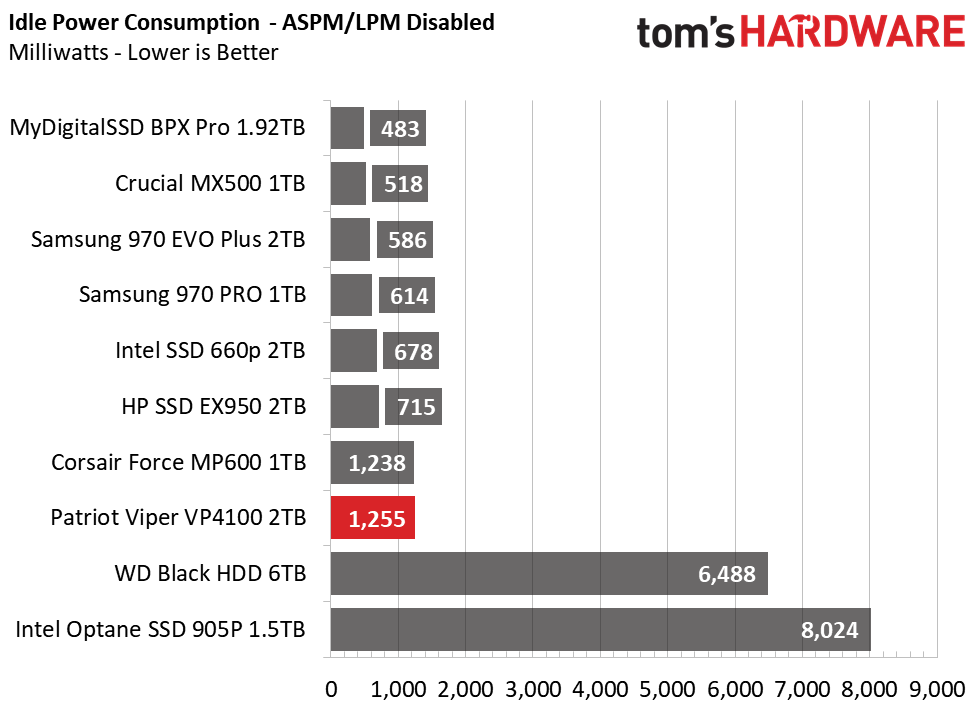
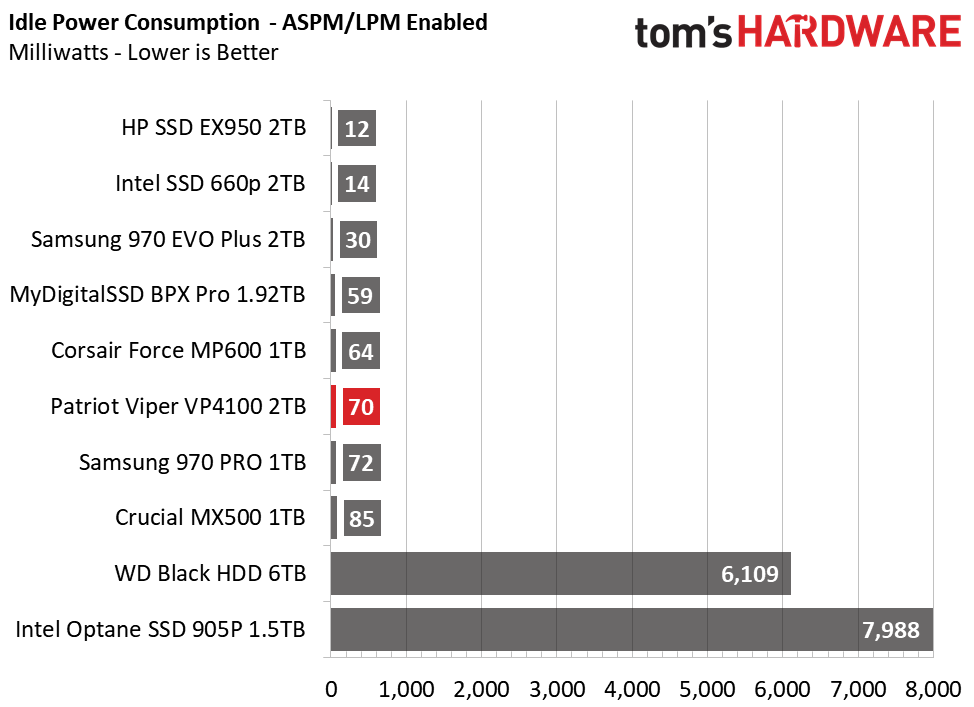
Overall, the 2TB Viper VP4100 is a very efficient SSD thanks to its high performance. With an average consumption of 4.2W during the 50GB transfer test, it averaged 208 MBps per watt and peaked at 7.12W. Also, at idle it barely sips any more power than the MP600, which has half the capacity. When ASPM is enabled, it draws only 70mW. With the feature disabled, it pulls just over 1.2W.
MORE: Best SSDs
MORE: How We Test HDDs And SSDs
MORE: All SSD Content

Sean is a Contributing Editor at Tom’s Hardware US, covering storage hardware.
-
nofanneeded Companies need to focus on IOPS , the Sequential performance is not that important over 3500MB/s it is more than enough , and external device cant touch that speed today so copying and pasting large files at 5000MB/s is not even utilized ...Reply
Focus on IOPS ... PLEASE. -
nitrium Is there a reason you dropped the Adata XPG SX8200 Pro from all the comparisons charts? Seems especially strange given it's supposedly Tom's Hardware favourite SSD?Reply -
seanwebster Reply
I didn’t have the 2TB sample at the time. I did include the HP EX950 though. It features the same hardware, so the performance should be similar.nitrium said:Is there a reason you dropped the Adata XPG SX8200 Pro from all the comparisons charts? Seems especially strange given it's supposedly Tom's Hardware favourite SSD?
But, for a more accurate measure, I have just received the 2TB SX8200 Pro in the mail and will be posting up some updated benches with both of these SSDs soon. -
daglesj Replynofanneeded said:Companies need to focus on IOPS , the Sequential performance is not that important over 3500MB/s it is more than enough , and external device cant touch that speed today so copying and pasting large files at 5000MB/s is not even utilized ...
Focus on IOPS ... PLEASE.
Not to mention OS/File System improvements to better handle tens of thousands of micro files without dropping to KBps data rates. Shifting video data etc. is no biggie. It's microfiles that are the real killer today.